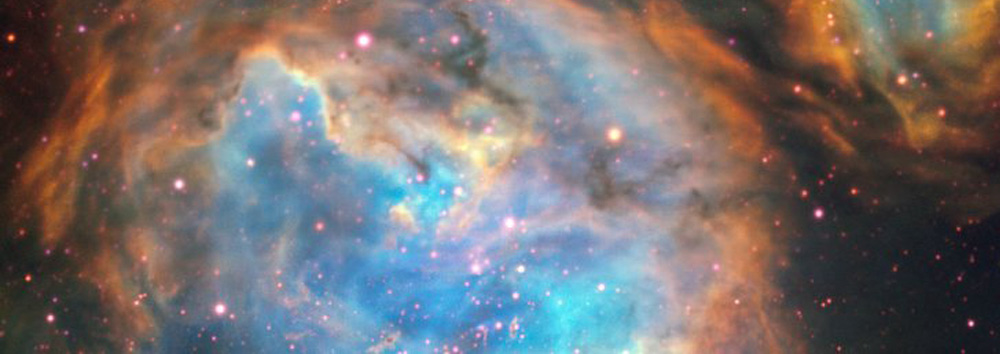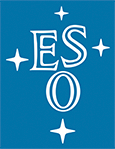© European Southern Observatory
This region of the Large Magellanic Cloud (LMC) glows in striking colours in this image captured by the Multi Unit Spectroscopic Explorer (MUSE) instrument on ESO’s Very Large Telescope (VLT). The region, known as LHA 120-N 180B — N180 B for short — is a type of nebula known as an H II region (pronounced “H two”), and is a fertile source of new stars.
The LMC is a satellite galaxy of the Milky Way, visible mainly from the Southern Hemisphere. At only around 160 000 light-years away from the Earth, it is practically on our doorstep. As well as being close to home, the LMC’s single spiral armappears nearly face-on, allowing us to inspect regions such as N180 B with ease.
H II regions are interstellar clouds of ionised hydrogen — the bare nuclei of hydrogen atoms. These regions are stellar nurseries — and the newly formed massive stars are responsible for the ionisation of the surrounding gas, which makes for a spectacular sight. N180 B’s distinctive shape is made up of a gargantuan bubble of ionised hydrogen surrounded by four smaller bubbles.
About ESO
ESO, the European Southern Observatory, is the foremost intergovernmental astronomy organisation in Europe and the world’s most productive astronomical observatory. ESO provides state-of-the-art research facilities to astronomers and is supported by Austria, Belgium, the Czech Republic, Denmark, Finland, France, Germany, Italy, the Netherlands, Poland, Portugal, Spain, Sweden, Switzerland and the United Kingdom, along with the host state of Chile. Several other countries have expressed an interest in membership.



